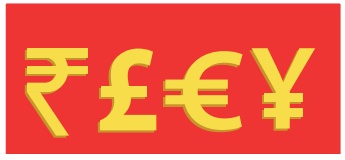Capital Market - New Financial Institutions | 12th Commerce : Chapter 5 : Financial Markets : Capital Market
Chapter: 12th Commerce : Chapter 5 : Financial Markets : Capital Market
New Financial Institutions
New Financial Institutions
A number of institutions of finance have been
established to cater to the credit requirements of various segments of industry
and needs. A brief outline of these institutions is presented below;
(i) Venture Fund Institutions
Venture capital financing is a form of equity
financing designed especially for funding new and innovative project ideas.
Venture capital funds bring into force the hi-technology projects which are
converted into commercial production. Many specialized financial institutions
have promoted their own venture capital funds. They include Risk Capital
Foundation of IFCI, Venture Fund of IDBI, SIDBI, Technology Development and
Infrastructure Corporation of India (TDICI), and others.
(ii) Mutual Funds
Financial institutions that provide facilities for
channeling savings of small investors into avenues of productive investments
are called ‘Mutual Funds’. A mutual fund company invests the funds pooled from
shareholders and gives them the benefit of diversified investment portfolio and
a reasonable return.
Specialized financial institution like LIC, UTI,
etc., beside commercial banks such as SBI, and Canara Bank are carrying out the
business of mutual funds. The benefits of mutual fund are high return, easy
liquidity, safety and tax benefits to the investors.
(iii) Factoring Institutions
“Factoring” is an arrangement whereby a financial
institution provides financial accommodation on the basis of assignment/ sale
of account receivables. The factoring institutions collect the book debts for
and on behalf of its clients. Some of the factoring institutions operating in
India are SBI Factors and Commercial Services Private Limited, a subsidiary of
State Bank of India and Canbank Factors Limited, a subsidiary of Canara Bank.
(iv) Over the Counter Exchange of India (OTCEI)
The OTCEI was set up by a premier financial
institution to allow the trading of securities across the electronic counters
throughout the country. It addresses some specific problems of both investors
and medium-size companies. Some of the greatest strengths of OTCEI are transparency
of transactions, quick deals, faster settlements and better liquidity.
(v) National Stock Exchange of India Limited (NSEI)
NSEI was established in 1992 to function as a model
stock exchange. The Exchange aims at providing the advantage of nation-wide
electronic screen based “scripless” and “floorless” trading system in
securities. The institution is expected to allow for an efficient and
transparent system of securities trading.
(vi) National Clearance and Depository System (NCDS)
Under the scripless trading system, settlement of
transactions relating to securities takes place through a book entry. The
entire scripless trading system comprises the following three segments:
a. National Trade Comparison and Reporting System
which prescribes the terms and conditions of contract for the securities market
b. National Clearing System which aims at
determining the net cash and stock liability of each broker on a settlement
date
c. National Depository System which arranges to
provide for the transfer of ownership of securities in exchange on payment by
book entry on electronic ledgers without any physical movement of transfer deed
(vii) National Securities Depositories Limited
The NSDL was set up in the year 1996 for achieving
a time bound dematerialization as well as rematerialization of shares. The
establishment of NSDL is expected to alleviate the problems of post trade
transactions in the secondary market.
(viii) Stock Holding Corporation of India Limited (SHCIL)
Stock Holding Corporation of India Limited (SHCIL)
aims at serving as a central securities depository in respect of transactions
on stock exchanges. The Corporation also takes up the administration of
clearing functions at a national level.
Foreign Exchange Market

The foreign exchange market abets the foreign
exchange trading. It is the largest, most liquid market in the world with an
average traded value of more than $5 trillion per day. It includes all of the
currencies in the world and any individual, company or country can participate
in it.
I. Commodity Market
The commodity market manages the trading in primary
products which takes place in about 50 major commodity markets where financial
transactions increasingly outstrip physical purchases which are to be
delivered. Commodities are commonly classified in two subgroups.
• Hard Commodities Market
• Soft Commodities Market

Hard commodities are raw materials
typically mined, such as gold, oil, rubber, iron, and ore.
Soft commodities are typically grown agricultural primary
products such as wheat, cotton, coffee, and sugar.
II. Derivatives Market

Derivatives market facilitates the trading in
financial instruments such as futures contracts and options used to help
control financial risk. The instruments derive their value mostly from the
value of an underlying asset that can come in many forms – stocks, bonds,
commodities, currencies or mortgages.
Gilt-Edged Market also known as Government
Securities market is the market for Government and semi-Government securities.
An important feature of the securities traded in this market is that they are
stable in value and are much sought after by banks.
• Guaranteed return on investments
• No speculation in securities
• Institutional based investors which are
compelled by law to invest a portion of their funds in these securities.
• Predominated by such institutions as
LIC, GIC, PFs and the commercial banks
• Heavy volume of transactions
necessitating negotiation of each transaction
Related Topics